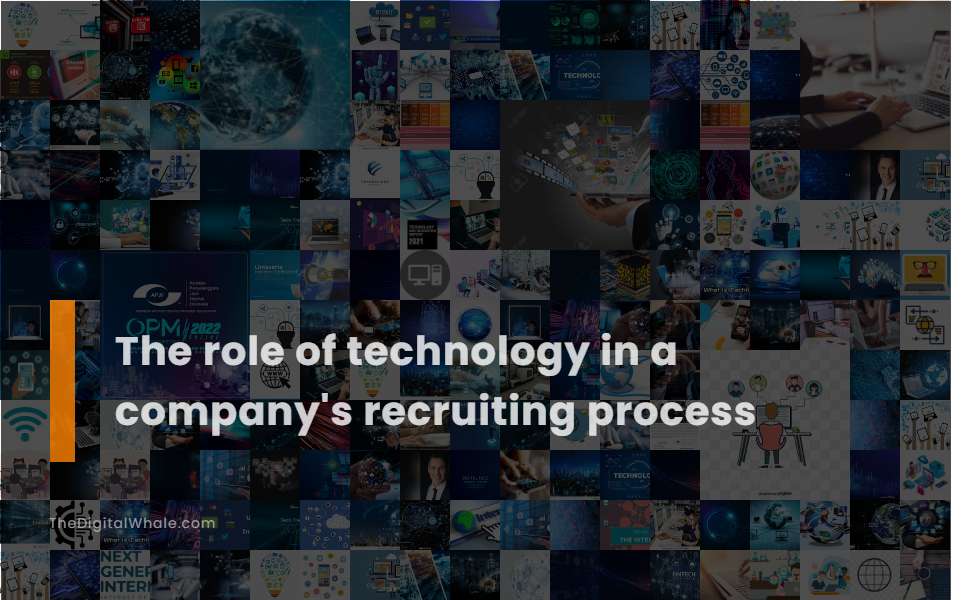The Role of Technology In A Company's Recruiting Process
What are the benefits of using technology in hiring? What are some ways technology can enhance modern recruitment? Let's find out more about The Role of Technology In A Company's Recruiting Process.

Sourcing candidates through tech platforms (e.g., LinkedIn, GitHub, Glassdoor)
Technology plays a crucial role in sourcing candidates through platforms like LinkedIn, GitHub, and Glassdoor, where recruiters can post jobs, interact with candidates, and utilize AI-driven tools to screen and analyze candidate data efficiently. Technical recruiters leverage these tech platforms to not only source candidates but also to manage the recruitment process comprehensively, from initial contact to onboarding. By employing technical assessments and job boards, they can identify and engage with relevant candidates more effectively. For further insights into tech recruitment, visit the Adaface Blog, which offers a detailed overview of how these platforms enhance the recruitment landscape.
Using Applicant Tracking Systems (ATS) for efficient candidate management
Applicant Tracking Systems (ATS) streamline the recruiting process by automating tasks such as job posting, resume screening, and interview scheduling, while also providing robust analytics for data-driven hiring decisions and enhancing candidate communication and relationship management. This technology centralizes candidate data, improves collaboration among hiring teams, and optimizes the hiring process to reduce time-to-hire and cost per hire. To learn more about these innovative systems, you can explore the insightful article on Applicant Tracking Systems on the Whatfix website.
Conducting technical assessments and coding exercises
Conducting technical assessments and coding exercises involves using methods like asynchronous technical assessments, pair programming exercises, and take-home assignments to evaluate candidates' technical skills. It's crucial to ensure that the exercises simulate real job conditions and utilize relevant tools and frameworks to assess performance accurately. For more insights into best practices for technical screening, you can visit the CoderPad Blog, which offers valuable guidance on creating effective assessments that align with the demands of the modern tech industry.
Utilizing data-driven screening tools for initial candidate filtering
Utilizing data-driven screening tools for initial candidate filtering involves using technical assessments to evaluate job-specific skills, ensuring engaging and concise tests to filter out candidates efficiently. Additionally, employing structured interview rubrics is crucial to eliminate unconscious bias and highlight exact job competencies. For more insights on improving your tech recruitment process, you can visit the article on Tech Recruitment by Adaface.
Creating precise job descriptions to attract suitable candidates
Technology, particularly generative AI, plays a crucial role in creating precise job descriptions by synthesizing data quickly, analyzing existing job postings, and generating new descriptions that are optimized for specific roles and industries. This ensures accuracy, inclusivity, and alignment with the company's values and market demands. For more insights on how AI can revolutionize this process, you can explore further at WorldatWork.
Related:
What are the advantages and disadvantages of remote working? Are there any other pros or cons to working remotely? Let's find out more about The Benefits and Drawbacks of Working Remotely.
Implementing structured interview rubrics to eliminate bias
Implementing structured interview rubrics is crucial in eliminating bias in the recruiting process, as it ensures that all candidates are judged based on predefined, job-specific criteria, reducing unconscious biases and improving hiring accuracy significantly. Using a structured interview rubric creates a fair and consistent hiring process by minimizing first impression bias and ensuring that all candidates are asked the same questions, allowing for an impartial comparison and reducing the influence of personal biases. For more on enhancing fairness and quality in hiring processes, visit Byteboard to explore structured interview techniques further.
Conducting behavioral and technical interviews
Conducting behavioral and technical interviews in a company's recruiting process involves using a combination of technical assessments and behavioral questions to evaluate a candidate's skills, problem-solving abilities, teamwork, communication, and cultural fit. This approach ensures a holistic view of their suitability for the role. For a comprehensive guide on crafting effective interview questions, consider exploring the resources offered by TestGorilla.
Leveraging AI and explainable artificial intelligence in recruitment
Leveraging AI in recruitment streamlines and automates various aspects of the hiring process, such as candidate sourcing, screening, and talent assessment. Furthermore, Explainable AI (XAI) enhances transparency, reduces bias, and provides clear insights into AI-driven decisions. This approach ensures fair and unbiased hiring practices while simultaneously improving the candidate experience.
Maintaining transparent communication throughout the recruitment process
Maintaining transparent communication throughout the recruitment process is crucial for creating a positive candidate experience, building trust, and ensuring clarity and consistency by providing accurate information about the job, company, and recruitment process. To delve deeper into this topic, visit the article on The Importance of Transparent Communication During the Hiring Process, which offers extensive insights on fostering open dialogue to enhance recruitment outcomes.
Involving the team in collective decision-making for hiring
Involving the team in collective decision-making for hiring enhances the recruitment process by leveraging collective intelligence, where multiple perspectives and experiences are combined to make more informed decisions about candidates, reducing biases and improving retention rates. This approach not only fosters inclusivity but also generates buy-in and encourages creativity among team members. Engaging the entire team ensures that all stakeholders feel valued and responsible for the outcome. Using platforms that enable open and safe idea-sharing, such as those discussed in ThoughtExchange, amplifies this process by giving your teams a voice, ultimately leading to a more successful and harmonious hiring environment.
Related:
What are some best practices for screening job applicants? What are some benefits of artificial intelligence in the hiring process? Let's find out more about The Pros and Cons of Using Technology To Screen Job Applicants.
